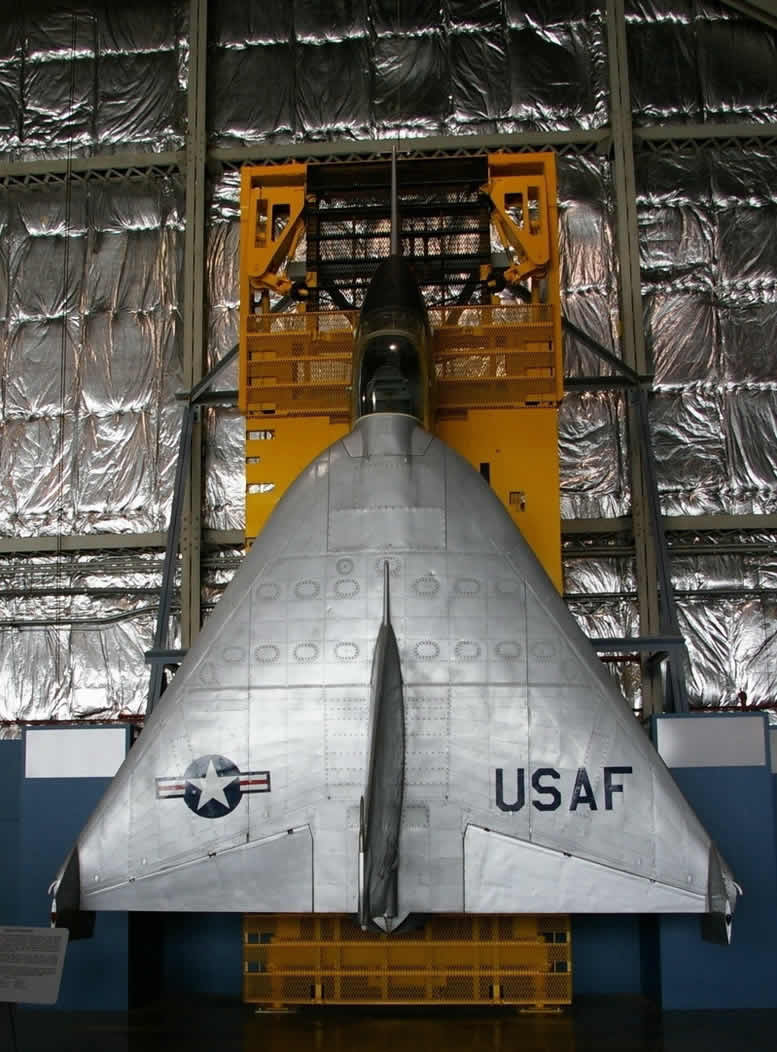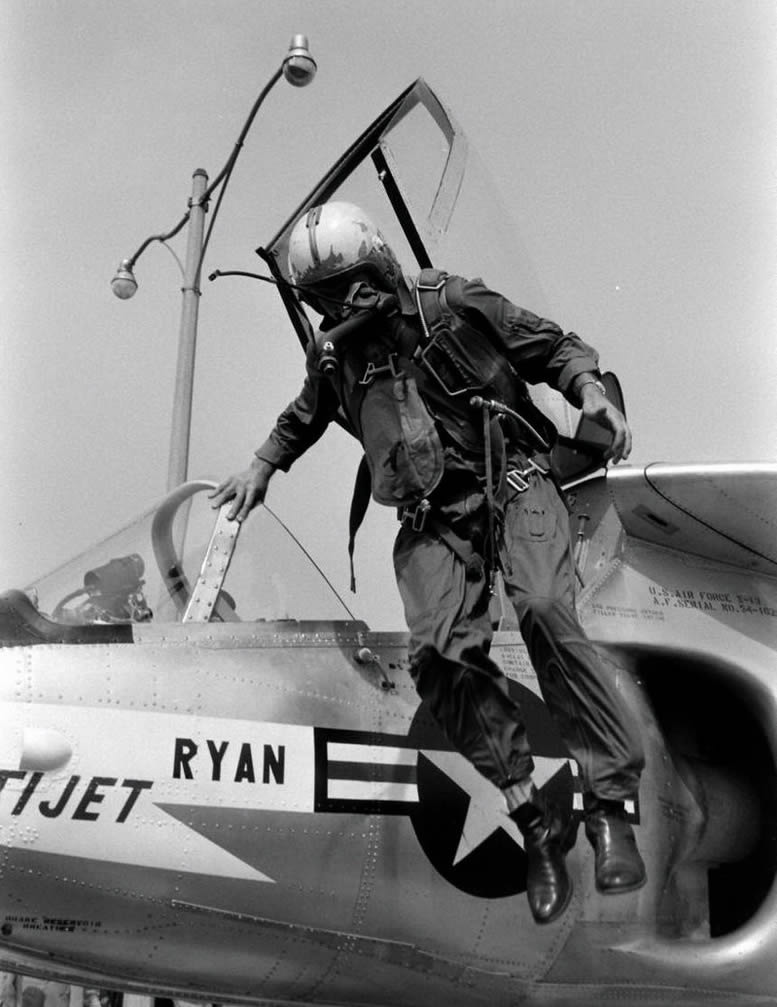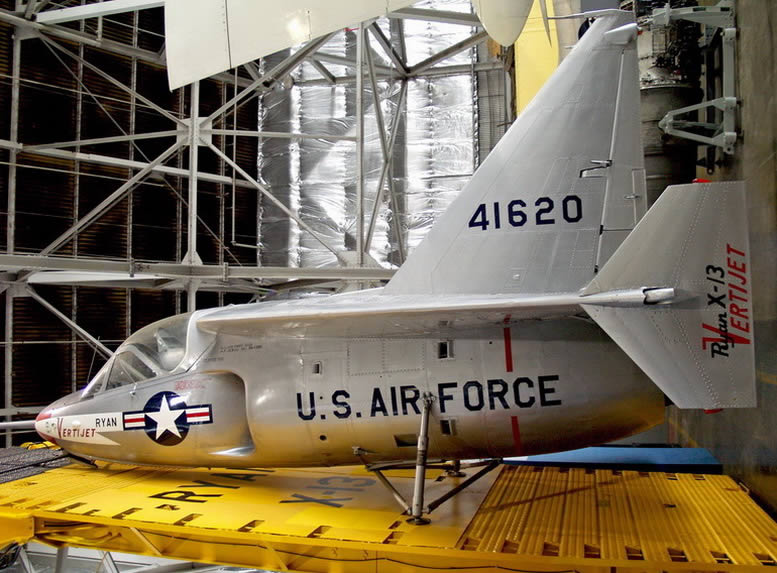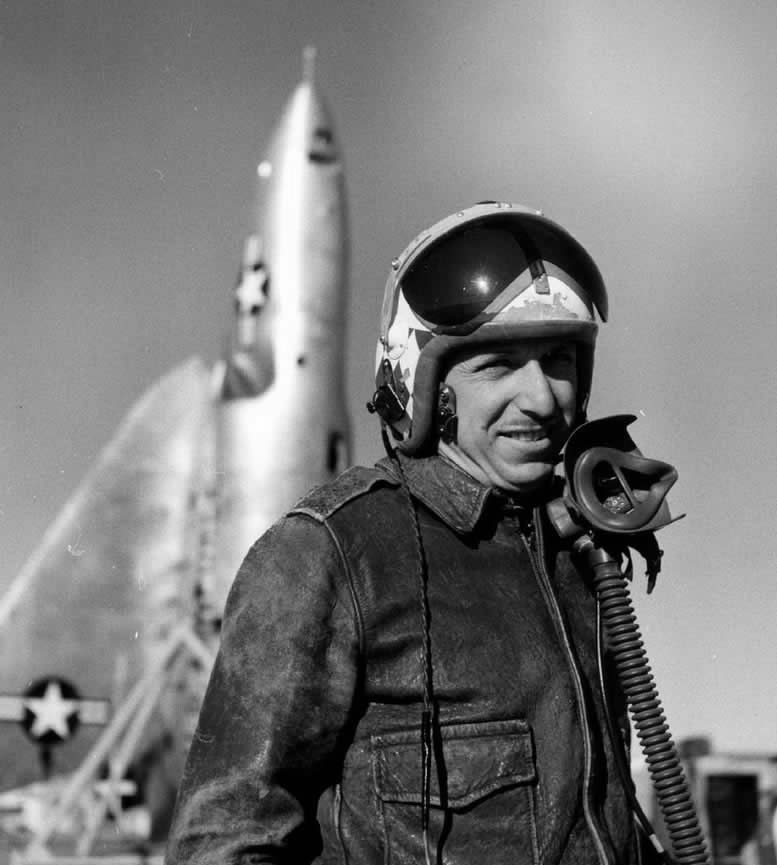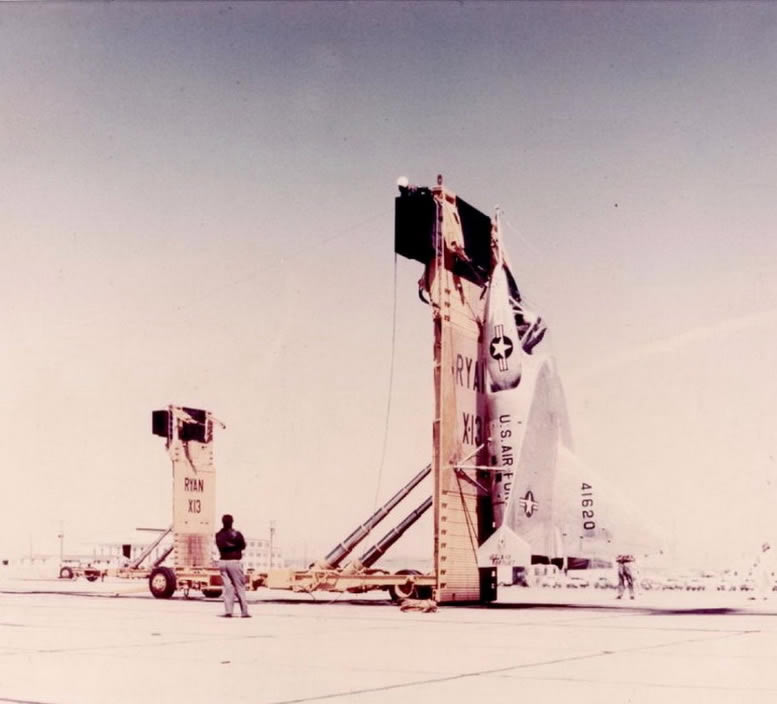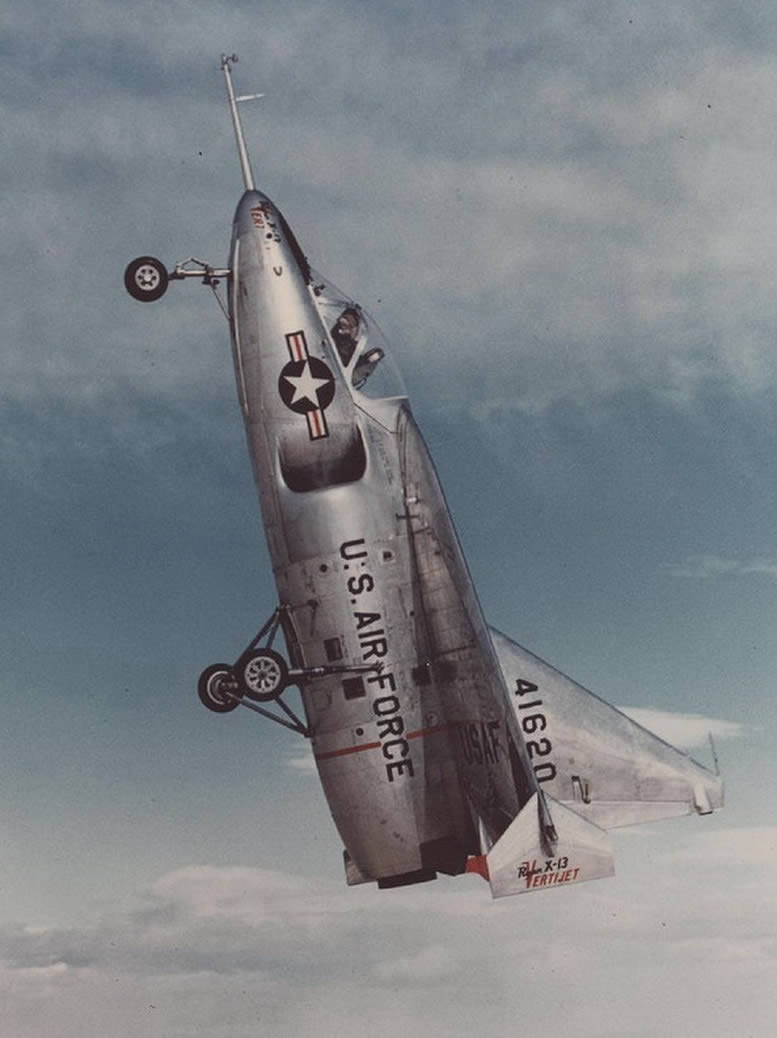RYAN X-13 VERTIJET (MODEL 69) WAS AN EXPERIMENTAL
VERTICAL TAKE-OFF AND LANDING AIRCRAFT
 ryan x-13 vertijet |
Ryan X-13 Vertijet Experimental VTOL Air Force Aircraft - Vertical Take Off And Landing Video
Ryan was awarded an Air Force contract in 1953 to develop an actual flying jet-powered VTOL aircraft, which was given the designation X-13
The Ryan X-13 Vertijet (company designation Model 69) was an experimental Vertical Take-Off and Landing aircraft flown in the United States in the 1950s. The main objective of the project was to demonstrate the ability of a pure jet to vertically takeoff, hover, transition to horizontal forward flight, and vertically land.
Just after World War II, Ryan engineers wondered whether the Ryan/U.S. Navy FR-1 Fireball, which had a thrust-to-weight ratio of 1 at low fuel quantities, would take off vertically. The Navy's Bureau of Aeronautics in 1947 awarded Ryan a contract, originally under the designation F3R, to investigate the development of a vertically launched jet fighter.
This was part of a program to evaluate the feasibility of submarine-based aircraft. Ryan conducted remote controlled VTOL tethered rig tests from 1947 to 1950 and a flying rig in 1951. Ryan was awarded an Air Force contract in 1953 to develop an actual flying jet-powered VTOL aircraft, which was given the designation X-13. Two prototypes were built.
The Ryan X-13 Vertijet was 23 ft 5 in (7.14 m) long. It was just large enough to accommodate the single place cockpit (with a tilted seat) and the 10,000 lbf (45 kN) thrust Rolls-Royce Avon turbojet. The high mounted delta wing of the aircraft had a wingspan of only 21 ft (6.4 m) and was capped with flat endplates. The nose of the aircraft had a hook on the underside and a short pole for gauging distance from the trailer. The hook was used to hang the Vertijet from the vertical trailer bed landing platform. After the aircraft was secured vertically, the trailer was lowered to horizontal and then used to transport the aircraft on the ground. Pitch and yaw control in hover were provided by vectored engine thrust. Roll control was provided by "puffer" jets (also known as 'jet reaction control') mounted outboard of the wingtip endplates.
The first prototype (#54-1619) was fitted with temporary landing gear and made its first horizontal flight on December 10, 1955. Later, it made full horizontal to vertical attitude conversions and back again at altitude. The first prototype then had the landing gear replaced with a tail mounted framework that held it in a vertical attitude on the ground. Using this rig, hooking practice was conducted. The second prototype (#54-1620), on April 11, 1957, made a vertical take-off from the vertically raised trailer, transitioned to horizontal flight and back again. It then returned to the vertical trailer and landed by hooking the landing wire. Flight tests were performed by two test pilots: Ryan's Chief Test Pilot Peter F. 'Pete' Girard, and Ryan Test Pilot W. L. "Lou" Everett.
On July 28-July 29, 1957, the X-13 was demonstrated in Washington, D.C. It crossed the Potomac River and landed at the Pentagon. The Air Force chose not to continue development of the Ryan X-13 Vertijet because of the lack of an operational requirement. The X-13 was designed to investigate vertical takeoff, horizontal flight transition, and return to vertical flight for landing. The first prototype of the X-13 was equipped with temporary tricycle landing gear.
The X-13 was flown conventionally on December 10, 1955 to test its aerodynamic characteristics. The Vertijet was then fitted with a temporary "tail sitting" rig. On May 28, 1956, it was flown from the ground in a vertical position to test its hovering qualities.
The X-13 VertiJet completed its first full-cycle flight at Edwards AFB, California on April 11, 1957, when it took off vertically from its mobile trailer, angled over into a horizontal attitude, and flew for several minutes. The X-13 then transitioned to vertical flight and slowly descended back onto its trailer and landed. |
© AviationExplorer.com - The Website For Aviation Enthusiasts |





